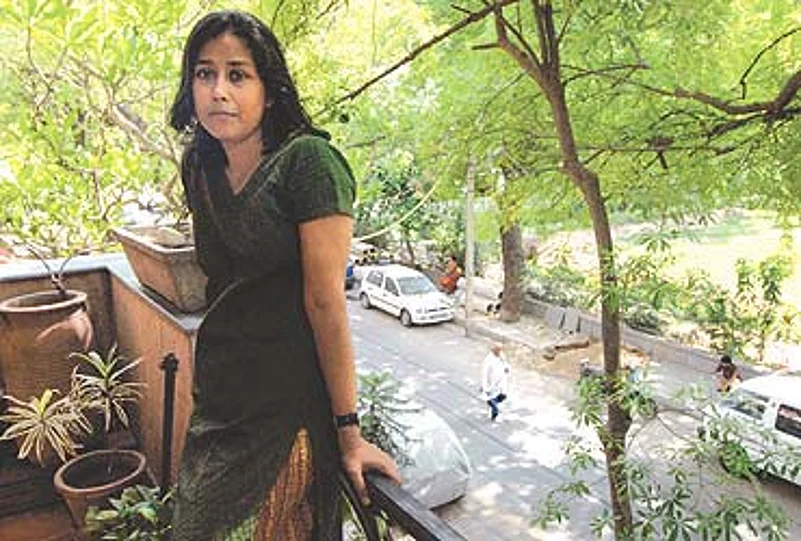The Facts
- One person dies of TB every minute in India and 5 lakh every year. This despite the fact that most forms of TB are curable.
- Over 2.2 million people get infected with TB every year. The detection rate, according to the health ministry's figures, is just 66 per cent.
- Each patient infected by lungs TB (pulmonary TB) infects 10-15 others in a year
- Due to improper treatment and low detection rates, there are more than 60,000 cases of Multi-Drug Resistant (MDR) TB
- Government allocation to fight TB has come down from 5.4% of the total health budget in 2000-01 to 1.6% in 2007-08
- Myth: TB infects only old, malnourished people living in unhygienic surroundings.
- Reality: It infects all age groups. There is a resurgence of the disease, specially among the urban youth aged between 14 and 35.
- Myth: It is a disease of the poor.
- Reality: The rich are equally at risk, owing to unhealthy lifestyles, marked by crash diets, stress, and erratic sleeping and eating habits.
- Myth: It is characterised by a racking cough and weight loss.
- Reality: TB can exist even in the absence of so-called common symptoms. The infected could be outwardly completely healthy.
- Myth: TB infects only the lungs and chest.
- Reality: It can infect almost all body parts, including brain, spine, lymph nodes, glands, liver, skin, genitals and uterus.
- Myth: TB is highly communicable, and largely incurable.
- Reality: Only TB of the lungs is communicable. The stigma against the disease is unjustified as with proper treatment, all types of TB are completely curable.
***

Only one of the many young TB patients Outlook spoke to proved willing to be photographed and be identified by name. Nandini Sundar, a young academic well-known in her field, had none of the symptoms usually associated with TB. It was an eye problem that took her to the doctor. Since this eye condition, uveisis, is often found among TB patients, doctors prescribed her tests for the same. Nandini found she had pulmonary TB. Now under treatment, she has discovered others in her peer group who have the disease, and sees no reason to feel ashamed of it. Rather, she feels, it is important that people be made aware of the bacteria's resurgence among the young urban middle class and prepare themselves should they be afflicted by it.
Less forthcoming was a 27-year-old primetime TV news anchor, who was diagnosed with pulmonary TB two years ago. Not only did his mother make him suppress the news from other family members, she didn't even allow him to buy his medicine from the nearby chemist, as he would be known there. Even the attitude of his educated colleagues took the young man by surprise. "It was like I was suffering from AIDS," he says. His doctor told him the bacteria had probably come awake because of his stressful lifestyle which involved long working hours and frequently missing meals.
It was a drastic diet again that stirred the deadly bacteria in Ruchira (name changed), a 22-year-old MA student from Delhi. Desperate to lose weight, she developed a back pain, which soon became unbearable. The doctors advised an MRI, which revealed that she had TB of the spine. Though this form of TB is not communicable, Ruchira's parents too are conscious of the stigma attached and forbade us from taking her photograph or even using her real name. After undergoing surgery at the Indian Spinal Injuries Centre in the capital, Ruchira is now on strong anti-TB drugs. She is lucky to have escaped any of the side-effects these can cause, from liver damage to weakness in the joints and even blindness...
Orthopaedic consultant Dr H.N. Bajaj, who operated on Ruchira, says that the problem with extra-pulmonary TB is that the patient may not show even the most common symptoms associated with the disease, which include persistent cough, loss of weight, appetite and fatigue. This makes detection difficult and requires advanced specialised tests. He has noticed a sharp rise in extra-pulmonary TB, and sees at least three new patients of spinal TB everyday. "It affects all strata and age groups of the society," he says, his youngest patient being a nine-month-old infant.
The TB Research Centre, Chennai, puts the number of people suffering from TB in India at a considerable 76 lakh. Of these, five lakh die every year. That makes it 1,370 people each day. The actual number of cases, and the mortality rate is much higher. Even the health ministry data says that over 30 per cent of the cases go undetected, and most of them are extra-pulmonary (outside of the lungs and chest). Compounding the problem is the alarming increase in the cases of Multi-Drug Resistant (MDR) TB, whose numbers the National TB Control Programme puts at 60,000. Treatment for such TB is ineffective and the mortality rate consequently very high.
Doctors and microbiologists attribute the epidemic proportion the disease has assumed to the government's neglect of the TB control programme. In the last few years, the collective energies of the government, NGOs and even the private sector have been more concentrated on the prevention of HIV infection and AIDS. It's a different matter that the increase in HIV infection levels has led to a concomitant rise in cases of TB, since the last most often strikes people when their immune defences are low.
Delhi gynaecologist and infertility specialist Dr Sonia Malik also criticises the government for directing all its effort towards pulmonary TB. Agreed, it is a communicable form and deserves the urgency it's being accorded, but there are other forms of TB that also require some, if not equal, attention.
Malik sees at least 10 new cases of infertility every day and those having frequent miscarriages. "When we started screening the patients for TB, we found that in 45-55 per cent of the cases, that was the main cause. This is a huge number, and a matter for concern," she says. Malik goes on to raise doubts about the effectiveness of bcg as a vaccine against TB. Dr Pradeep Seth, consultant in virology and medical biotechnology, and former head of microbiology at AIIMS, however, says that the vaccine is at least preventing TB among children and is effective till adolescence.
Seth agrees that the government's initial focus remained more on detection. Now, however, he says, it is shifting to treatment as well. With DOTs (Directly Observed Therapy, Short Course) being taken even to remote areas, a significant effort is being made to control the disease. The problem, he says, lies in "patients abandoning treatment before they are completely cured". Because of that, "the drug-resistant kind of TB has increased. At AIIMS, we found that more than 30 per cent of TB patients were drug-resistant," he says. Seth feels it is not for the government alone to handle TB's resurgence, it has too much on its plate already—diarrhoea, malaria, dengue, meningitis and HIV. "Why blame only the government? The private sector has to step in," he advocates.
This defence notwithstanding, the government's efforts at combating TB leave a lot to be desired. The budgetary allocation to TB eradication has come down from 5.4 per cent of the total health budget in 2000-2001 to a measly 1.6 per cent in 2007-2008—a sum of Rs 267 crore. Compare it with the funds HIV/AIDS attracts, with aid pouring in from international organisations. The National AIDS Control Programme (NACP) II had nearly Rs 1,200 crore at its disposal to spend in five years for the period 1999-2004. NACP-III is in the offing.
Microbiologist Dr Nimrat Bawa, also an AIIMS alumnus, is conducting some specialised TB tests at her lab Auroprobe, and has stumbled upon something amazing. She has found that of the women who tested positive for uterine and endometrial TB, in half the cases, their husbands too were found infected with the disease. "It requires a lot more research before we can claim that genito-urinary TB could be sexually transmitted. It can open a Pandora's box," she says. Dr Bawa reiterates the close correlation between HIV and the rising incidence of TB among the HIV-infected, but she also points to the reverse happening—the rising HIV infection among TB patients. This, according to her, could be due to the genito-urinary lesions in TB patients, facilitating HIV transmission and infection. She has applied for funds for her research to the Bill Gates Foundation, which has pledged $200 million for AIDS prevention in India between 2004 and 2009. The war against TB needs funding on a similar scale.


























